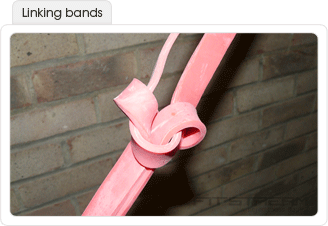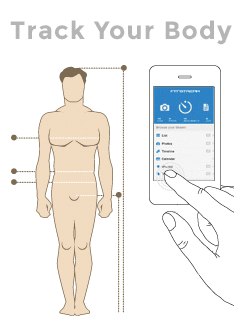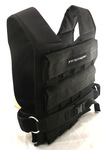How to do resistance runs
Preparation:
- Attach bands to sturdy anchor point such as fence post, pole, or tree. Secure other end of band to a speed harness, to your waist, or alternatively another band fastened around your chest and shoudlers.
- Place a target object around 10-15 yards from your starting point.
Exercise instructions:
- Assume starting sprint position.
- Sprint to your target object. As you approach the resistance from the band will increase, slowing you down considerably.
- Try to maintain full speed and maintain your forward lean into the band so that you are not catapulted backward.
- Stride slowly back to the starting position under control and repeat for desired number of reps.
Notes:
- Ensure anchor point is fixed in place and sturdy.
- Having an object to run towards helps give you a focal points and allows you to more easily gauge performance between sprints.
- Ensure band durability and resistance level is appropriate for ballistic running drills. You will require heavy duty power bands, as opposed to lightweight tubes or Latex sheets.
- Directional forces applied by the bands will vary depending on the height it is anchored to.
Resisted running guide
Resistance running involves the use of resistance bands with one end attached to the body and the other to a fixed anchor point - as a means of introducing progressive resistance to sprint training. The further you sprint from the anchor point the more resistance is provided by the band.

Why use exercise bands for running?
Running with bands will help develop speed and explosive lower body power. The added resistance and explosive form used in the sprint drills helps to build serious strength and endurance in hip and leg muscles.
The exercise mimics the muscles you would normally use when running but under an increasing resistance level until you cannot power any further through the resistance inflicted by the band.
Which bands do I need for running?
Resisted sprints are best performed with longer fitness bands designed specifically for running, but you can also link together multiple, heavy-duty bands using the choke technique (pictured).
 Fitstream AppTrack your fitness progress and see the difference for yourself with our free app
Fitstream AppTrack your fitness progress and see the difference for yourself with our free app










